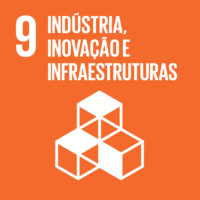Ciência_Iscte
Publicações
Descrição Detalhada da Publicação
Proceedings of International Conference on Information Technology and Applications ICITA 2022. Lecture Notes in Networks and Systems
Ano (publicação definitiva)
2023
Língua
Inglês
País
Singapura
Mais Informação
Web of Science®
Esta publicação não está indexada na Web of Science®
Scopus
Google Scholar
Esta publicação não está indexada no Overton
Abstract/Resumo
Motivation—Industrial internet of things (IIoT) refers to interconnected sensors, instruments, and other devices networked together with computers’ industrial applications, including manufacturing and energy management. This connectivity allows for data collection, exchange, and analysis, potentially facilitating improvements in productivity and efficiency, as well as other economic benefits. IIoT provides more automation by using cloud computing to refine and optimize process controls.
Problem—Detection and classification of events inside industrial settings for process monitoring often rely on input channels of various types (e.g. energy consumption, occupation data or noise) that are typically imprecise. However, the proper identification of events is fundamental for automatic monitoring processes in the industrial setting, allowing simulation and forecast for decision support.
Methods—We have built a framework where process events are being collected in a classic cars restoration shop to detect the usage of equipment such as paint booths, sanders and polishers, using energy monitoring, temperature, humidity and vibration IoT sensors connected to a Wifi network. For that purpose, BLE beacons are used to locate cars being repaired within the shop floor plan. The InfluxDB is used for monitoring sensor data, and a server is used to perform operations on it, as well as run machine learning algorithms.
Results—By combining location data and equipment being used, we are able to infer, using ML algorithms, some steps of the restoration process each classic car is going through. This detection contributes to the ability of car owners to remotely follow the restore process, thus reducing the carbon footprint and making the whole process more transparent.
Agradecimentos/Acknowledgements
This work was produced with the support of INCD funded by FCT and FEDER under the project 01/SAICT/2016 nº 022153, and partially supported by NOVA LINCS (FCT UIDB/04516/2020)
Palavras-chave
Process activity recognition,IIoT,IoT sensors,Intrusive load monitoring,Machine learning,Indoor location,Classic cars restoration,Charter of Turin
Classificação Fields of Science and Technology
- Ciências da Computação e da Informação - Ciências Naturais
- Engenharia Eletrotécnica, Eletrónica e Informática - Engenharia e Tecnologia
Registos de financiamentos
| Referência de financiamento | Entidade Financiadora |
|---|---|
| 01/SAICT/2016 nº 022153 | Fundação para a Ciência e a Tecnologia |
| UIDB/04516/2020 | Fundação para a Ciência e a Tecnologia |
Contribuições para os Objetivos do Desenvolvimento Sustentável das Nações Unidas
Com o objetivo de aumentar a investigação direcionada para o cumprimento dos Objetivos do Desenvolvimento Sustentável para 2030 das Nações Unidas, é disponibilizada no Ciência_Iscte a possibilidade de associação, quando aplicável, dos artigos científicos aos Objetivos do Desenvolvimento Sustentável. Estes são os Objetivos do Desenvolvimento Sustentável identificados pelo(s) autor(es) para esta publicação. Para uma informação detalhada dos Objetivos do Desenvolvimento Sustentável, clique aqui.

 English
English


